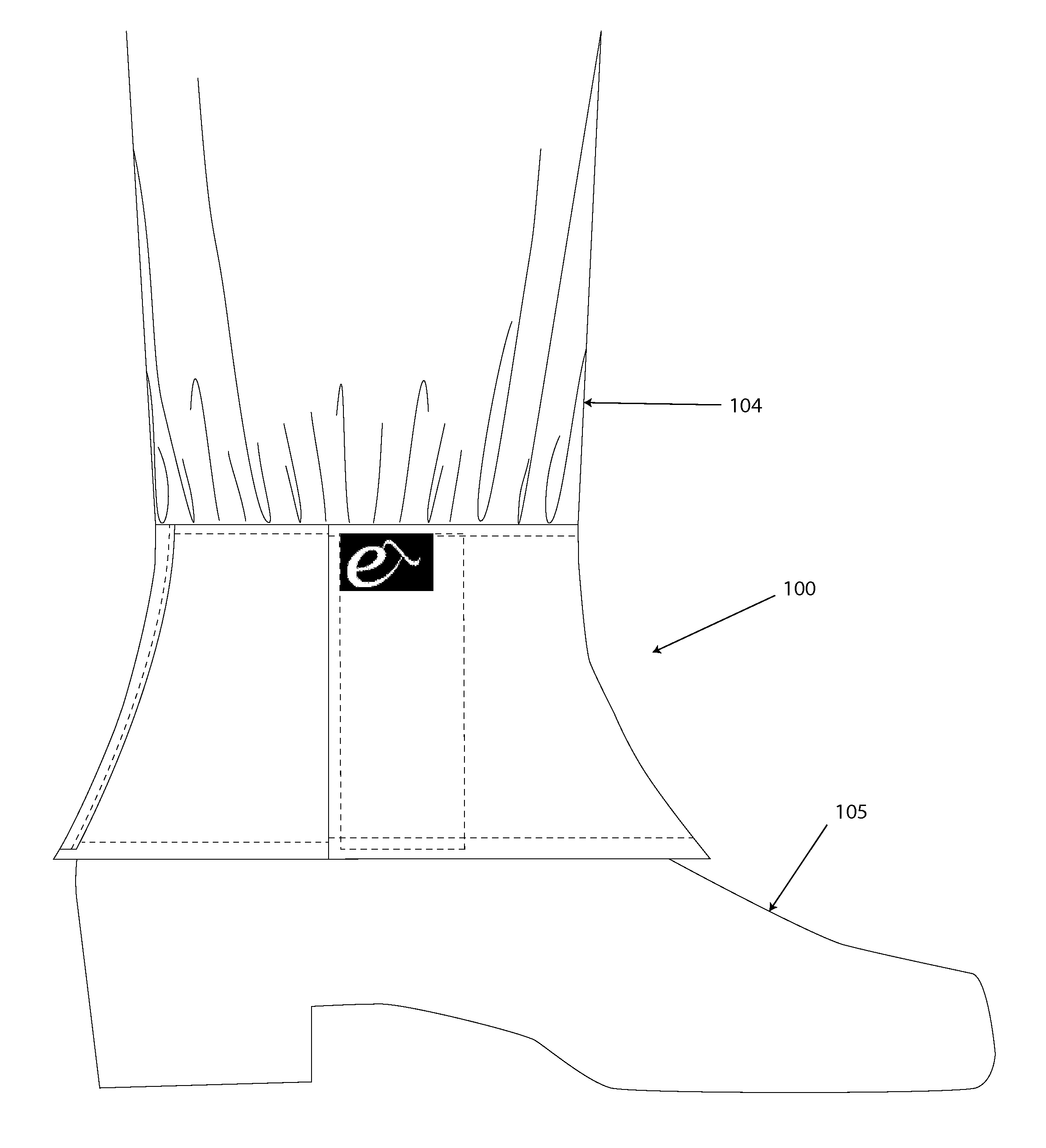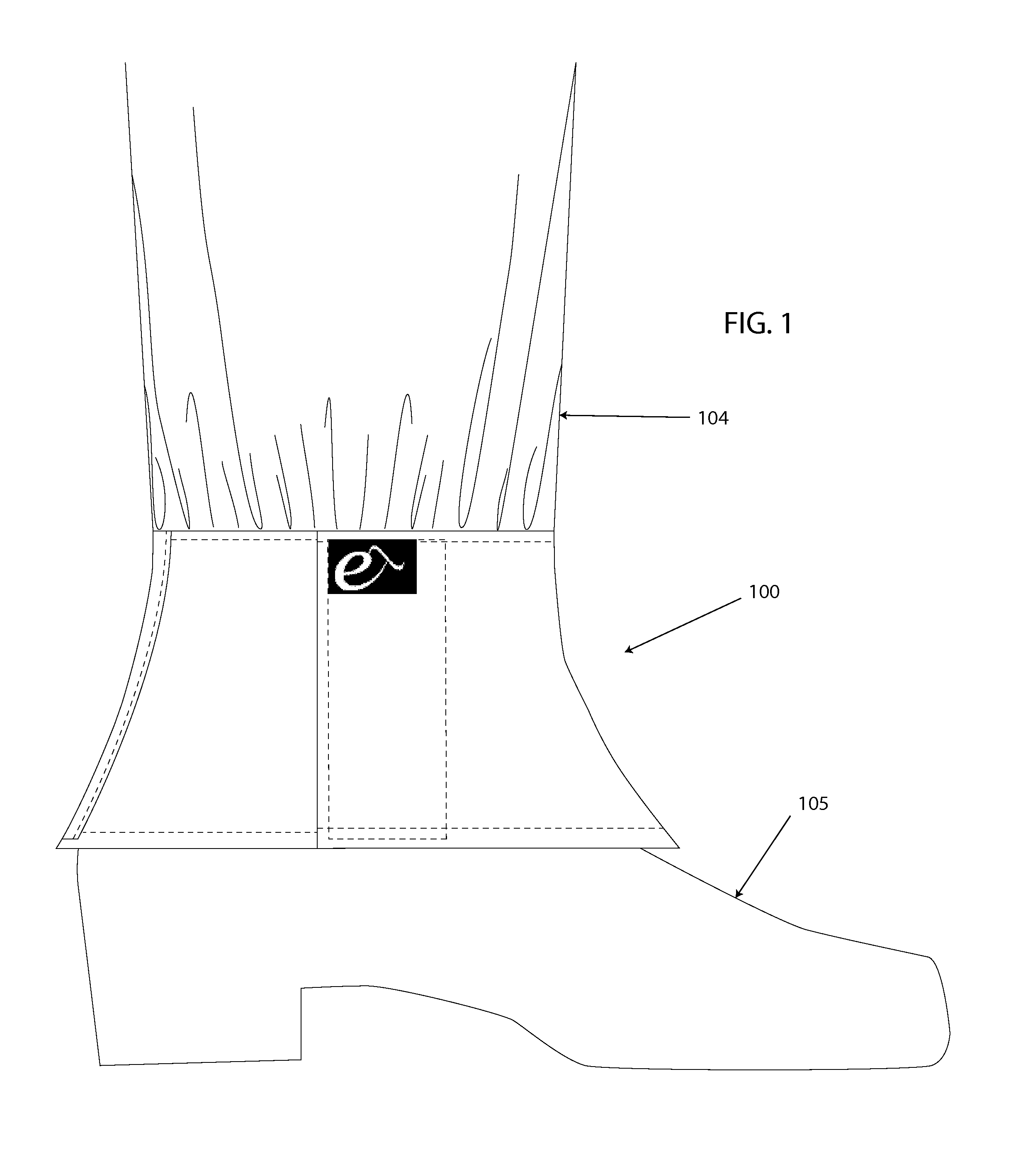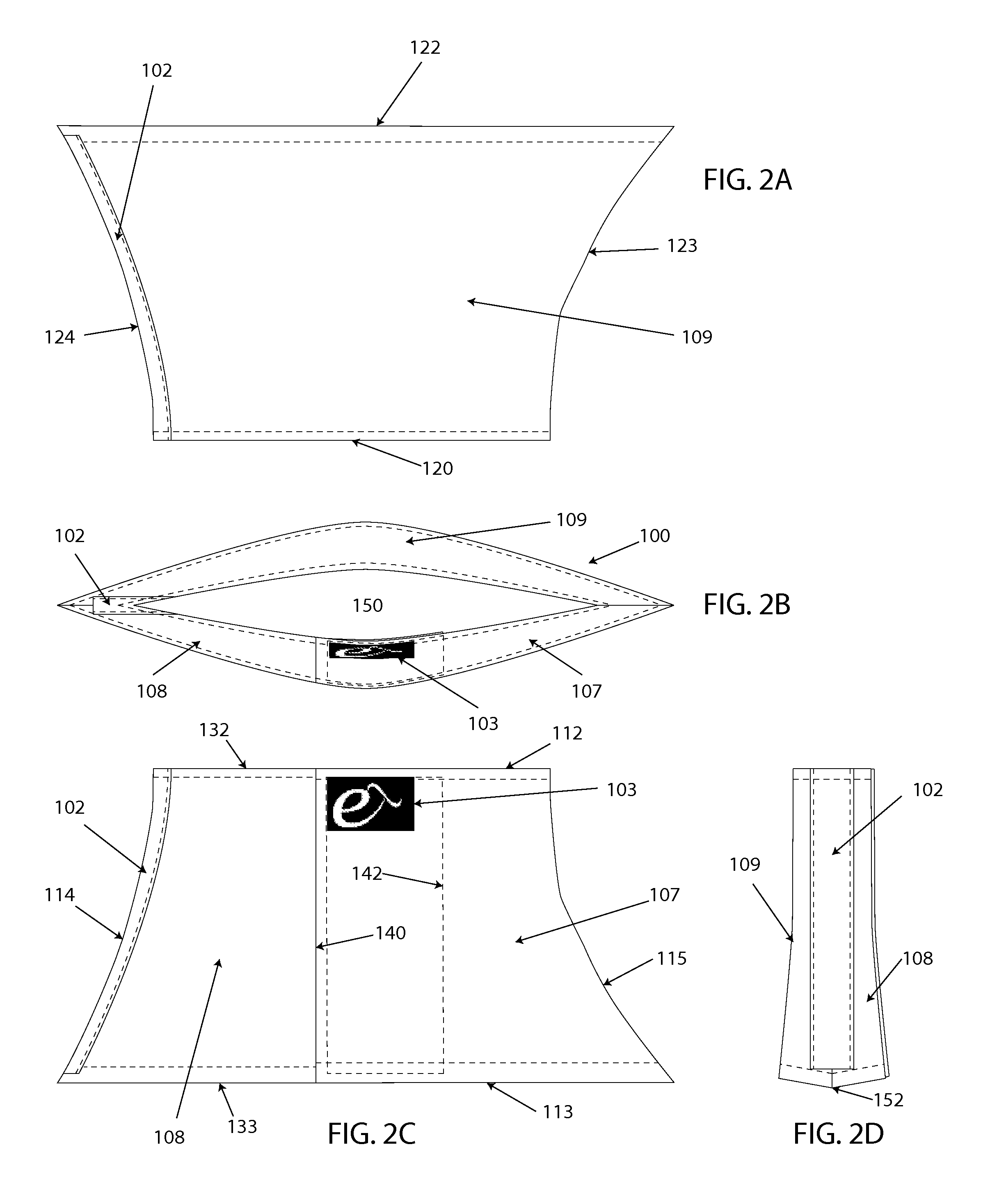Bicycle Cuff
a bicycle and cuff technology, applied in the direction of garment suspenders, gaiters, pats, etc., can solve the problems of grease and dirt damaging the lower portion of the right pant leg, dangerous accidents, and damage to the clothing and health of people riding bicycles, so as to and improve the safety of riding
- Summary
- Abstract
- Description
- Claims
- Application Information
AI Technical Summary
Benefits of technology
Problems solved by technology
Method used
Image
Examples
Embodiment Construction
[0016]One embodiment of the cuff disclosed herein includes a woven nylon material coated on one side with urethane for water-resistance (referred to as water resistant urethane-coated nylon), loop and hook style closure on one side, reflective material at the center back vertical seam, and a brand logo label at the top left hand corner of the opening flap, on the outside of the cuff. The shape of the cuff approximately follows the curve of the rider's foot from ankle to the edge of the instep at the center front, and from ankle to the top of the heel at the center back. The loop and hook style fastener lies approximately halfway between the center front and center back of the foot, on the outside of the right leg. The cuff material runs from just above the ankle to just below the start of the heel of the foot (at the back center seam) and just beyond the start of the foot's instep (at the front center seam). The cuff is shaped to allow it to fall at these points on the ankle and the...
PUM
 Login to View More
Login to View More Abstract
Description
Claims
Application Information
 Login to View More
Login to View More - R&D
- Intellectual Property
- Life Sciences
- Materials
- Tech Scout
- Unparalleled Data Quality
- Higher Quality Content
- 60% Fewer Hallucinations
Browse by: Latest US Patents, China's latest patents, Technical Efficacy Thesaurus, Application Domain, Technology Topic, Popular Technical Reports.
© 2025 PatSnap. All rights reserved.Legal|Privacy policy|Modern Slavery Act Transparency Statement|Sitemap|About US| Contact US: help@patsnap.com



